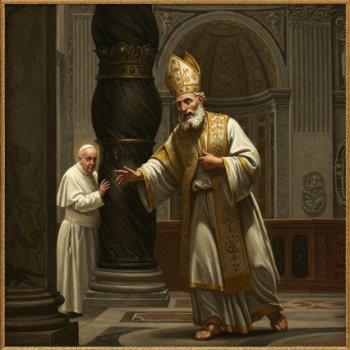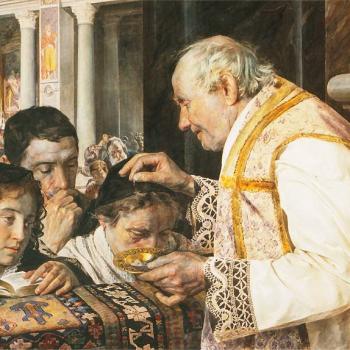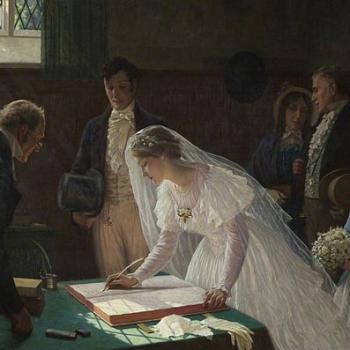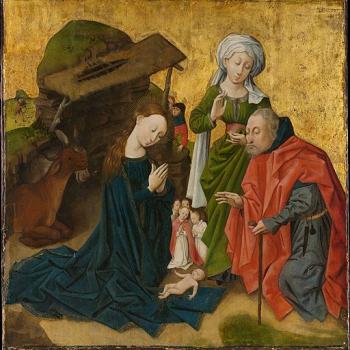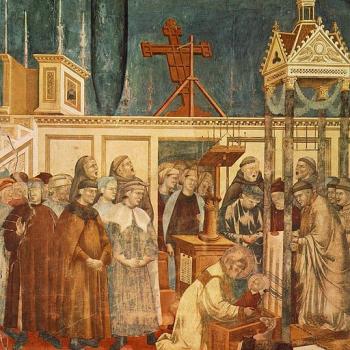I ran into a fascinating interview on Pray Tell Blog with Dr. Tia Noelle Pratt, a sociologist of religion who is currently completing a major study of African American Catholics. It was published as part of Black Catholic History Month. I recommend the whole thing, but here I want to focus on a short response that reinforced my own thoughts, where she touches on the idea of a white space.
You mentioned the concept of an “ultra-white space” at SSSR. Could you elaborate on the idea for non-sociologists, particularly with how this pertains to the liturgy?
It’s a theoretical idea that I’m still working on, so I don’t want to say too much at this time. Basically, I’m looking at sociologist, Dr. Elijah Anderson’s, concepts of “The White Space” and “The Cosmopolitan Canopy”. In the analysis, I am examining how the dynamics of race and racism within the Church can exemplify, or purports to exemplify, these concepts. In the case of The White Space, the Church can even heighten them as a result of systemic racism thus making it an ultra-white space.
On my own, I coined the term “white space” (see below), so I was very interested in seeing this idea articulated in the sociological literature. The idea is nicely summarized in an abstract to a paper by Elijah Anderson (the whole paper is available at the link):
Since the end of the Civil Rights Movement, large numbers of black people have made their way into settings previously occupied only by whites, though their reception has been mixed. Overwhelmingly white neighborhoods, schools, workplaces, restaurants, and other public spaces remain. Blacks perceive such settings as “the white space,” which they often consider to be informally “off limits” for people like them. Meanwhile, despite the growth of an enormous black middle class, many whites assume that the natural black space is that destitute and fearsome locality so commonly featured in the public media, including popular books, music and videos, and the TV news—the iconic ghetto. White people typically avoid black space, but black people are required to navigate the white space as a condition of their existence.
I came up with the idea of white space as I tried to make sense out of race and racism in Alabama. I do not think the South is more racist than the rest of the country. To quote line I heard attributed to Dick Gregory, black people in the US have two choices: to live down South or up South. However, the South (or at least Alabama, which I assume is representative of the old Confederacy) is more open about racism in some ways, and it plays out some interesting ways. In particular, based on my observations, it seems to me that blacks and whites do interact in many social settings, but they do so only if it happens in a white space: a physical/social space which is defined according to white cultural norms and preferences, and in which black remains the other.
Here are two examples that led to me formulating this idea. First, I belong to a serious weightlifting gym, and many of the members are black, just as many of the serious local competitors are black. The black members interact freely with the majority white membership, but I began to notice that the gym was, in a number of small ways, still white. For instance, the music played on the sound system is all classic rock or heavy metal–there is no rap or hip hop. Unless they are interacting with one another, all the social small talk in the gym is done in terms of white cultural referents.
A second example is a negative one. Last year my wife Gabrielle and I noticed an ad in the back of the local paper for a comedy jam at the local theater. On a whim we went, and discovered that we were, essentially, the only white people in the house. (To the best of my knowledge, after scanning the crowd pretty carefully, there were two other white people at the show, and both were special guests of the black MC; the white guy had saved his life after a bad car accident.) I mentioned the show to a friend at the gym, and it turns out he knew the MC and had hired him in the past to be the MC at his body-building shows. The MC is a locally well-known and popular comedian. But this particular show was one white people simply did not attend–it was a black space.
This brings me to the question in the title of the article: does this idea of a “white space” apply to the Catholic Church? In particular, are the two local parishes white spaces? In my parish there are black Catholics, though their numbers are small compared to the overall population. At one time there was a black Catholic Church in Tuscaloosa (a common thing in the Jim Crow South); I do not know how big it was when it closed or what happened to the parishioners: were they absorbed into the two remaining (white) parishes, or do they drive up the road to Birmingham, where there are still several large black parishes, to attend mass? But I do know that there is nothing that highlights their presence; they are essentially invisible, in the sense of Ralph Ellison. They are welcome members of the parish, but they must navigate a parish that expresses its identity completely in white cultural terms.
Moreover, I think it is telling that the churches in Birmingham are explicitly identified as “black churches”, even though no one would ever think to identify the other churches as “white churches.” The black churches are black spaces and so white people generally will not attend them; the remaining churches are white spaces; blacks who attend must conform to white Catholic norms. To illustrate the difference, let me recount a somewhat tangential story. Years ago I had a convention in New Orleans, and because of my flight ended up at an early mass in a black parish. The music was incredible (the pianist looked and sounded like he had come straight from and after-hours club), and the sign of peace took nearly five minutes. The priest was an elderly white man, but he had learned to adapt to the needs and desires of his parishioners. Periodically he would interrupt his rather dry delivery by saying, in a monotone, “can I get an amen?” The congregation would respond immediately with a loud “AMEN!”. I told this story to my son Francisco, and a couple years ago he took a road trip to New Orleans with a (white) Catholic friend. At her insistence they went to the Cathedral, where the congregation was overwhelmingly white. The priest saying mass was black, and was trying to get some kind of response from his parish, saying to them at one point, “Is this a church or a library.” My son chose to respond by saying “Amen!”, only to earn disapproving looks from the people sitting nearby.
The fact that our parishes are white spaces also had an impact on the large Mexican and Latino (mostly Guatemalans) community at the other parish in Tuscaloosa. They had their own Spanish language mass, though some of them would come to the other masses. But once a year the parish would have a celebration for the feast of Our Lady of Guadalupe at one of the main morning masses, and the Latino community would come and hold a big lunch afterwards. This, however, had the effect of turning this mass into a Latino space, and large numbers of the white parishioners would not attend this mass. And almost none of them would go to the hall for the (really good) Mexican food being served for lunch.
In the parish Church itself there is one small irruption of Latino culture: a modest icon of Our Lady of Guadalupe. Not surprisingly, I heard that there were objections when someone first proposed that it be installed. The objections were couched in terms of cleanliness: people were afraid the Mexicans would keep bringing offerings of flowers and leaving them by the icon, creating a mess.
I have no solution for this: this is my description, not my prescription. But I have been a member of a parish that joyfully embraced its multicultural heritage (Italian, French, Polish, African-American, Vietnamese, Philippino, among others)–it was definitely not a white space in the sense defined above, but the minority white population was part of it and found a home there. And it would seem to me that if we are to take seriously St. Paul, who describes us as “neither Jew nor Greek, slave nor free”, that the white majority needs to ask if we have indeed created spaces where black and Latino Catholics are welcome, but only if the social space we construct is not one they are not fully integrated into.






